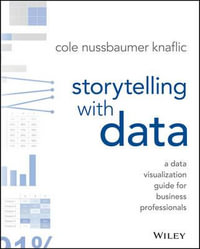
Modern Computational Finance
Scripting for Derivatives and xVA
By: Antoine Savine, Jesper Andreasen
Hardcover | 21 October 2021 | Edition Number 1
At a Glance
Hardcover
Limited Stock Available
RRP $157.95
$93.25
41%OFF
An incisive and essential guide to building a complete system for derivative scripting
In Volume 2 of Modern Computational Finance Scripting for Derivatives and xVA, quantitative finance experts and practitioners Drs. Antoine Savine and Jesper Andreasen deliver an indispensable and insightful roadmap to the interrogation, aggregation, and manipulation of cash-flows in a variety of ways. The book demonstrates how to facilitate portfolio-wide risk assessment and regulatory calculations (like xVA).
Complete with a professional scripting library written in modern C++, this stand-alone volume walks readers through the construction of a comprehensive risk and valuation tool. This essential book also offers:
- Effective strategies for improving scripting libraries, from basic examples—like support for dates and vectors—to advanced improvements, including American Monte Carlo techniques
- Exploration of the concepts of fuzzy logic and risk sensitivities, including support for smoothing and condition domains
- Discussion of the application of scripting to xVA, complete with a full treatment of branching
Perfect for quantitative analysts, risk professionals, system developers, derivatives traders, and financial analysts, Modern Computational Finance Scripting for Derivatives and xVA: Volume 2 is also a must-read resource for students and teachers in master’s and PhD finance programs.
Industry Reviews
“The Global Financial Crisis resulted in profound changes in quants’ Modus Operandi. This timely three-volume set describes some of the tools necessary to deal with these changes. Individual volumes cover in detail several important topics of interest to anyone who wants to stay au courant with modern developments in financial engineering. While the books are predominantly practically oriented, they strike a fine balance between theoretical and applied considerations. The authors are prominent practitioners and indisputable thought-leaders in the field. I recommend this set enthusiastically to anyone who wishes to understand the current and emerging trends in financial engineering.”
- Prof. Alexander Lipton, Founder and CEO, Stronghold Labs; Fellow, Connection Science and Engineering, Massachusetts Institute of Technology
ISBN: 9781119540786
ISBN-10: 111954078X
Published: 21st October 2021
Format: Hardcover
Language: English
Number of Pages: 288
Audience: General Adult
Publisher: John Wiley & Sons Inc (US)
Country of Publication: GB
Edition Number: 1
Dimensions (cm): 23.5 x 16.0 x 1.6
Weight (kg): 0.59
Shipping
| Standard Shipping | Express Shipping | |
|---|---|---|
| Metro postcodes: | $9.99 | $14.95 |
| Regional postcodes: | $9.99 | $14.95 |
| Rural postcodes: | $9.99 | $14.95 |
How to return your order
At Booktopia, we offer hassle-free returns in accordance with our returns policy. If you wish to return an item, please get in touch with Booktopia Customer Care.
Additional postage charges may be applicable.
Defective items
If there is a problem with any of the items received for your order then the Booktopia Customer Care team is ready to assist you.
For more info please visit our Help Centre.
You Can Find This Book In
This product is categorised by
- Non-FictionAccounting & FinanceFinanceCorporate Finance
- Non-FictionMathematicsApplied Mathematics
- Non-FictionComputing & I.T.Computer Programming & Software Development
- Non-FictionMathematics
- BargainsAcademia & Knowledge Bargains
- BargainsNon-Fiction BargainsScience Bargains
- BargainsNon-Fiction BargainsBusiness, Finance & Self Help























